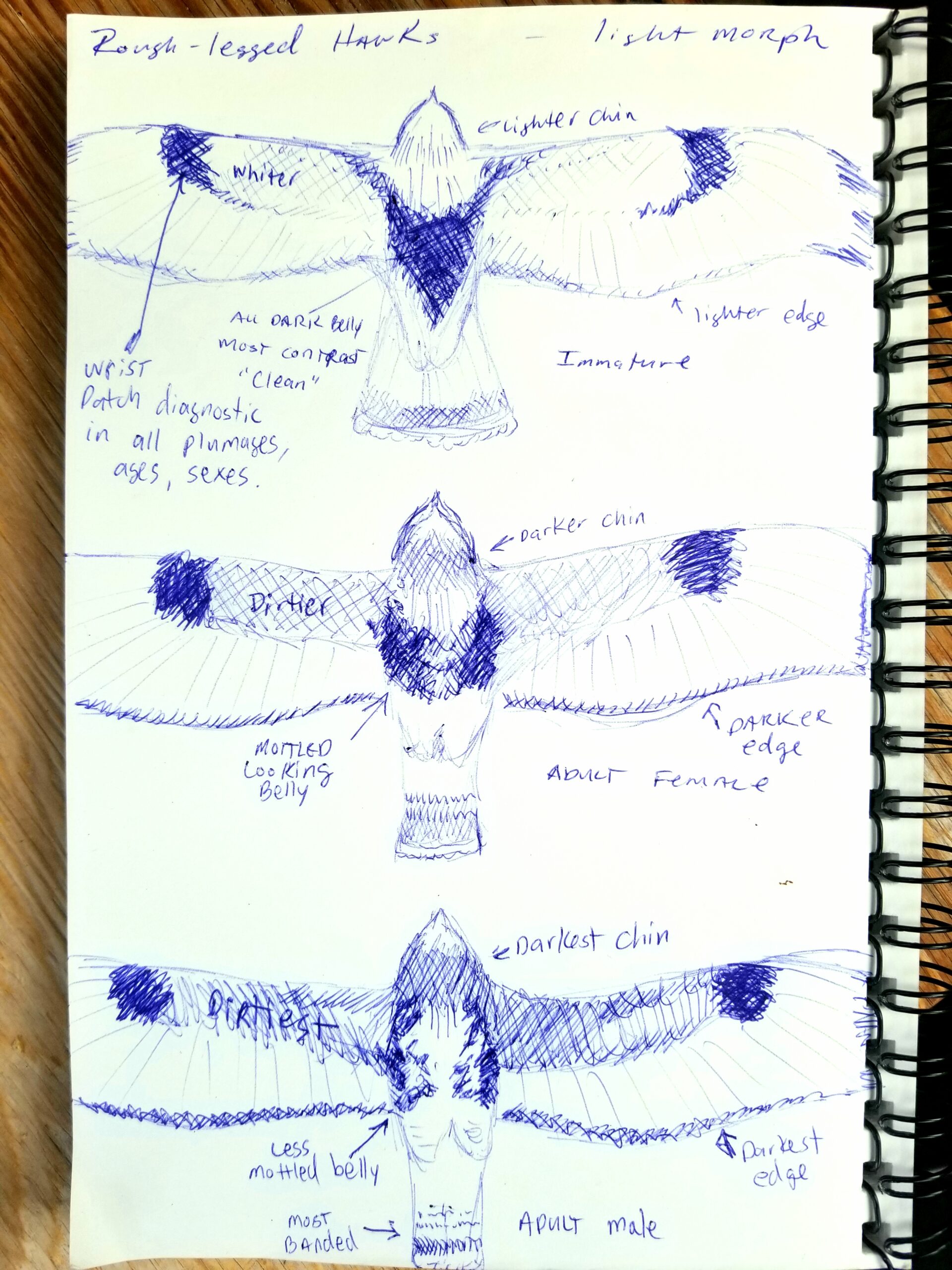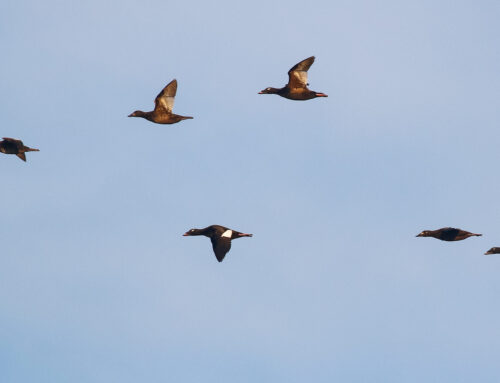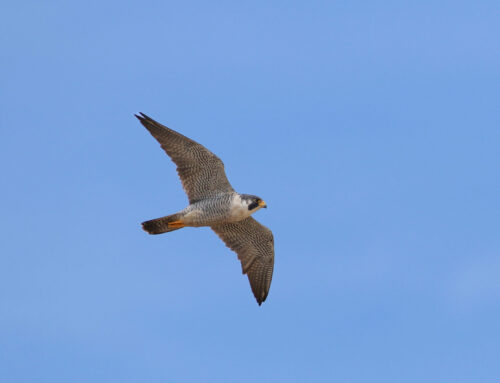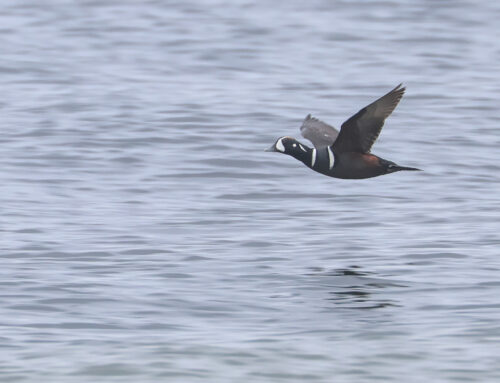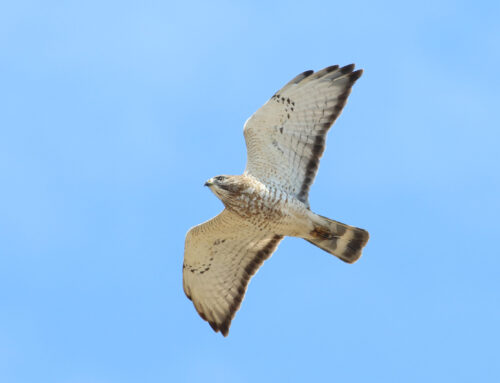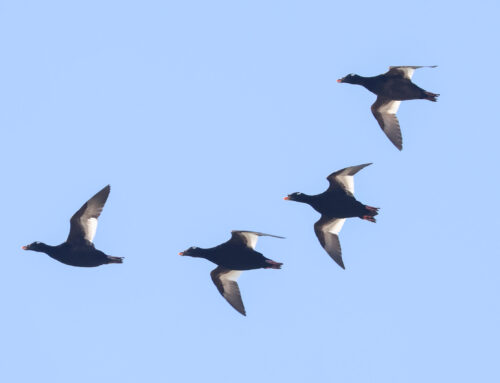Last week was a stellar week for raptor migration here at Whitefish Point — a week that predicted nothing but rain turned into a week of nothing but birds, birds, and more birds! Rough-legged and Red-tailed Hawks came in the hundreds, peaking on Saturday with over 500 Red-tailed Hawks in the sky at one time. American Kestrel and Sharp-shinned Hawk numbers picked up respectfully, and the season’s first Peregrine Falcon made a well-timed appearance. Northern Flickers, Rusty Blackbirds, Common Grackles, and American Robins are all making noise in numbers, as are spring peepers and wood frogs. I saw the season’s first mourning cloak butterfly yesterday, and along with the surprisingly warm temperatures, it is all enough to make me say spring has finally sprung in Paradise.
One of the questions I am asked quite often is how do I keep track of the count, to which I reply with a playful wink of my eye, “I use all my fingers and toes.” I can joke about it because I know that, to a trained eye, counting is the easy part. We also keep track of age, gender, color morph (light vs. dark plumage), and even sub-species/race. I have read a lot of literature on the subject of raptor ID, and while the knowledge therein is indispensable, nothing reinforces that knowledge for me more than field sketches and taking notes. Perhaps some of you may cringe at the thought of taking notes while hawk watching. I mean, what more can I do to ruin a perfectly good time, right? Let me tell you, there is no better way to drive home field marks on a bird than by drawing them, and as they kettle overhead, raptors make perfect subjects for drawing.
You don’t even need to be a great artist. Just look at the drawings above; not even my mother would hang those on the refrigerator! Alright, she would, because she’s my mom but, you get what I mean, right? You can look at those drawings numerous times and still forget what to look for in the field. But draw them just once — an adult male, an adult female, and an immature Rough-legged Hawk — and that will inform you what to look for using a whole other neural pathway. If you have a camera, you can even snap an image and draw from it at your leisure. But why not give it a go now? Assuming you have the time and materials at hand, I invite you to grab a pen and paper and use the illustrations above. I promise, not only will it be worth your while, it will be fun, and it will bring you closer to nature. And, if you get the drawings to me, I’ll even put them on my refrigerator!
~ Rich Couse
2021 Spring Hawk Counter
Drawings by Rich Couse
You can see live updates for the 2021 Spring Hawk Count on Dunkadoo, read Rich’s weekly blog post, and follow WPBO’s social media (Facebook, Instagram, and Twitter) for hawk count highlights this season.
If you visit WPBO, please practice social distancing while doing so. Although not required, we encourage you to wear masks if you are in close proximity to other people, even if outdoors. If necessary, a capacity limit will be set for how many people can utilize the Hawk Deck simultaneously.

